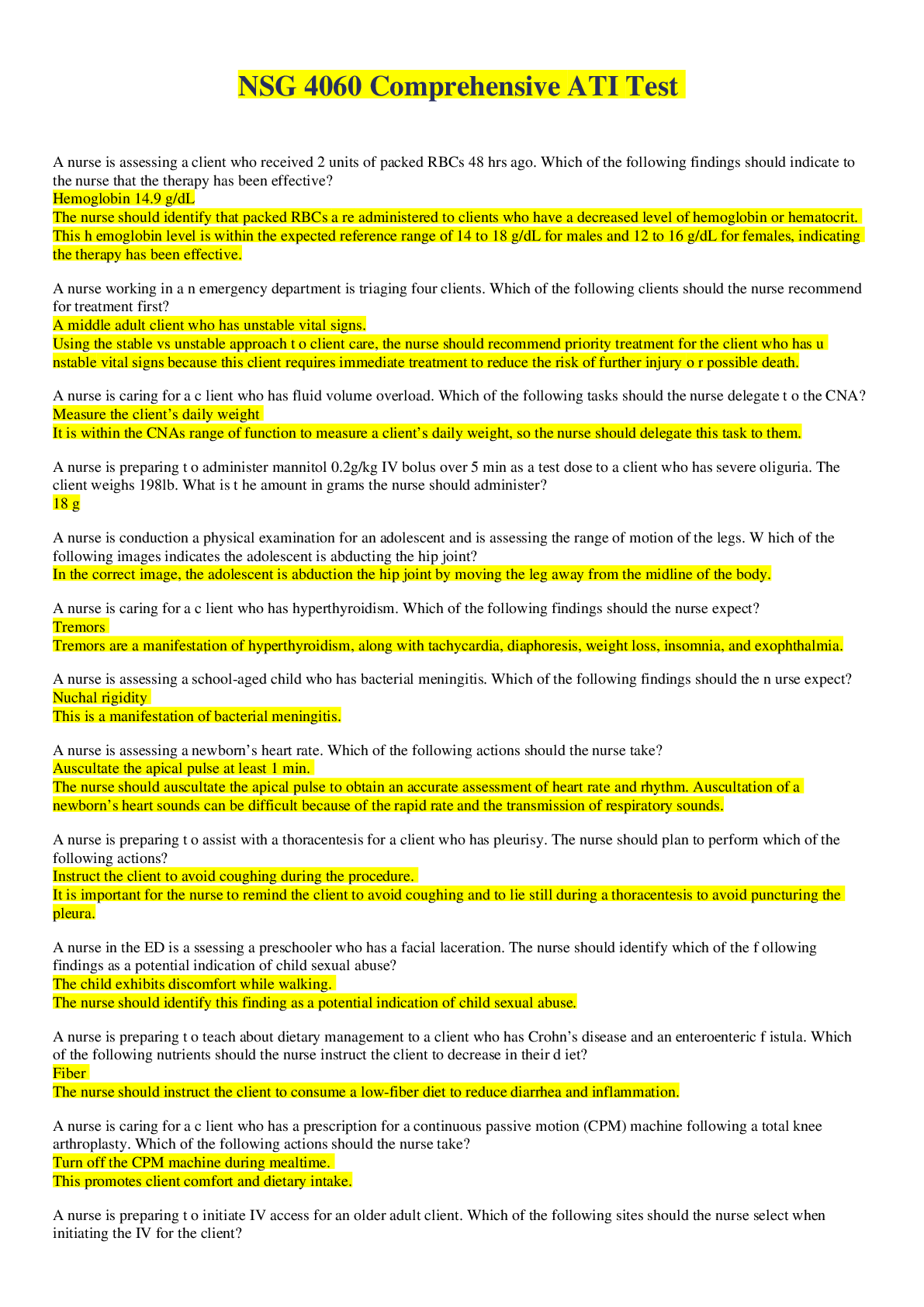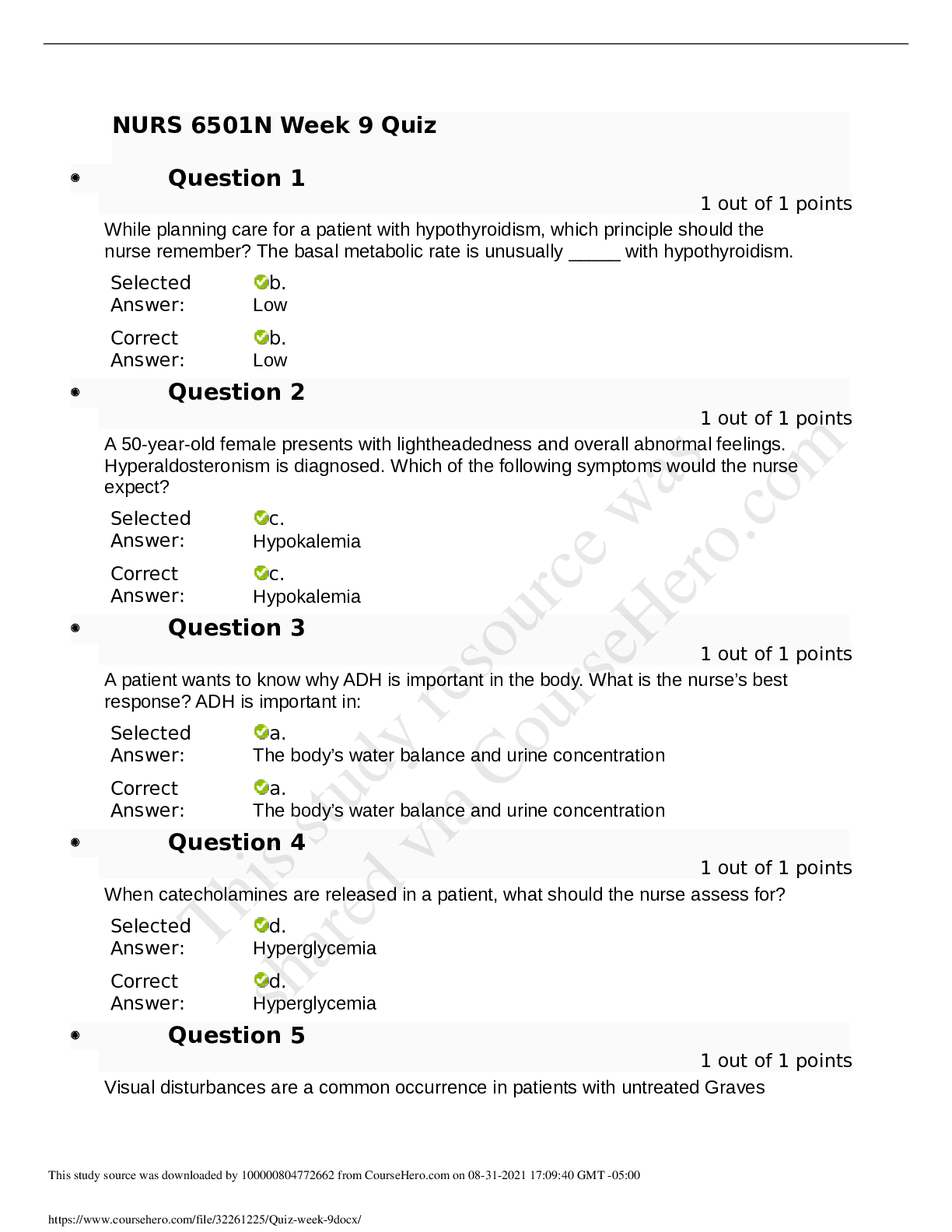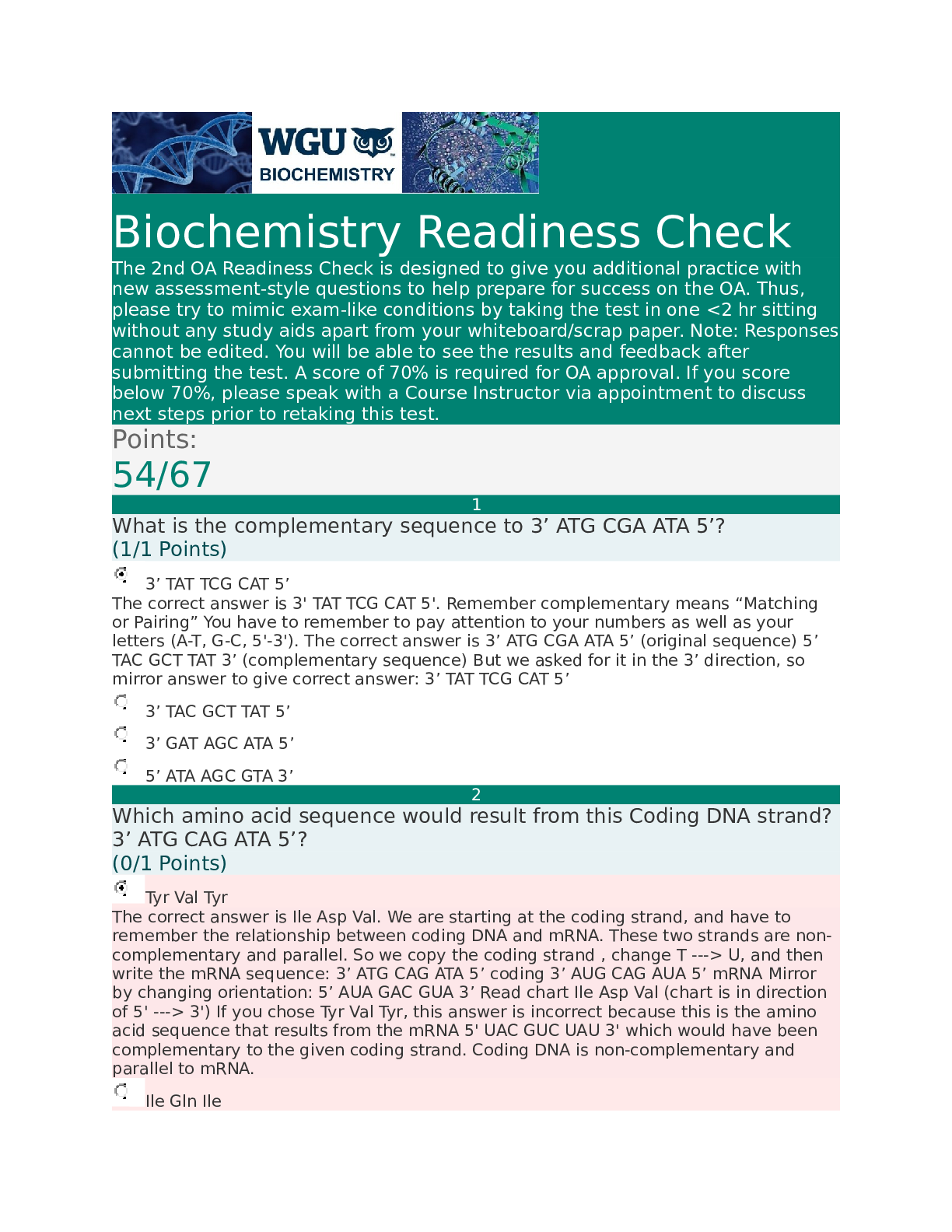maternal questions
Document Content and Description Below
Question 1 See full question The nurse is conducting discharge teaching with a postpartum woman. What would be an important instruction for this client? You Selected: Call her caregiver if loc... hia moves from serosa to rubra. Correct response: Call her caregiver if lochia moves from serosa to rubra. Explanation: Most cases of late postpartum hemorrhage occur after the woman leaves the health care or birthing facility. Therefore, client education before discharge about expected changes and danger signs and symptoms is crucial. Instruct the woman to call her primary care provider if she experiences any signs of infection, such as fever greater than 100.4°F (38°C), chills, or foulsmelling lochia. She should also report lochia that increases (versus decreasing) in amount, or reversal of the pattern of lochia (i.e., moves from serosa back to rubra). Reference: Pillitteri, A. Maternal and Child Health Nursing, 7th ed., Philadelphia: Wolters Kluwer Health/Lippincott Williams & Wilkins, 2014, Chapter 25: Nursing Care of a Family Experiencing a Postpartum Complication, p. 682. Chapter 25: Nursing Care of a Family Experiencing a Postpartum Complication - Page 682 Question 2 See full question A nurse is developing a program to help reduce the risk of late postpartum hemorrhage in clients in the labor and birth unit. Which measure would the nurse emphasize as part of this program? You Selected: inspecting the placenta after delivery for intactness Correct response: inspecting the placenta after delivery for intactness Explanation: After the placenta is expelled, a thorough inspection is necessary to confirm its intactness because tears or fragments left inside may indicate an accessory lobe or placenta accreta. These can lead to profuse hemorrhage because the uterus is unable to contract fully. Administering antibiotics would be appropriate for preventing infection, not postpartum hemorrhage. Manual removal of the placenta or excessive traction on the umbilical cord can lead to uterine inversion, which in turn would result in hemorrhage. [Show More]
Last updated: 2 years ago
Preview 1 out of 60 pages

Buy this document to get the full access instantly
Instant Download Access after purchase
Buy NowInstant download
We Accept:

Reviews( 0 )
$7.00
Can't find what you want? Try our AI powered Search
Document information
Connected school, study & course
About the document
Uploaded On
Aug 31, 2021
Number of pages
60
Written in
Additional information
This document has been written for:
Uploaded
Aug 31, 2021
Downloads
0
Views
124



















